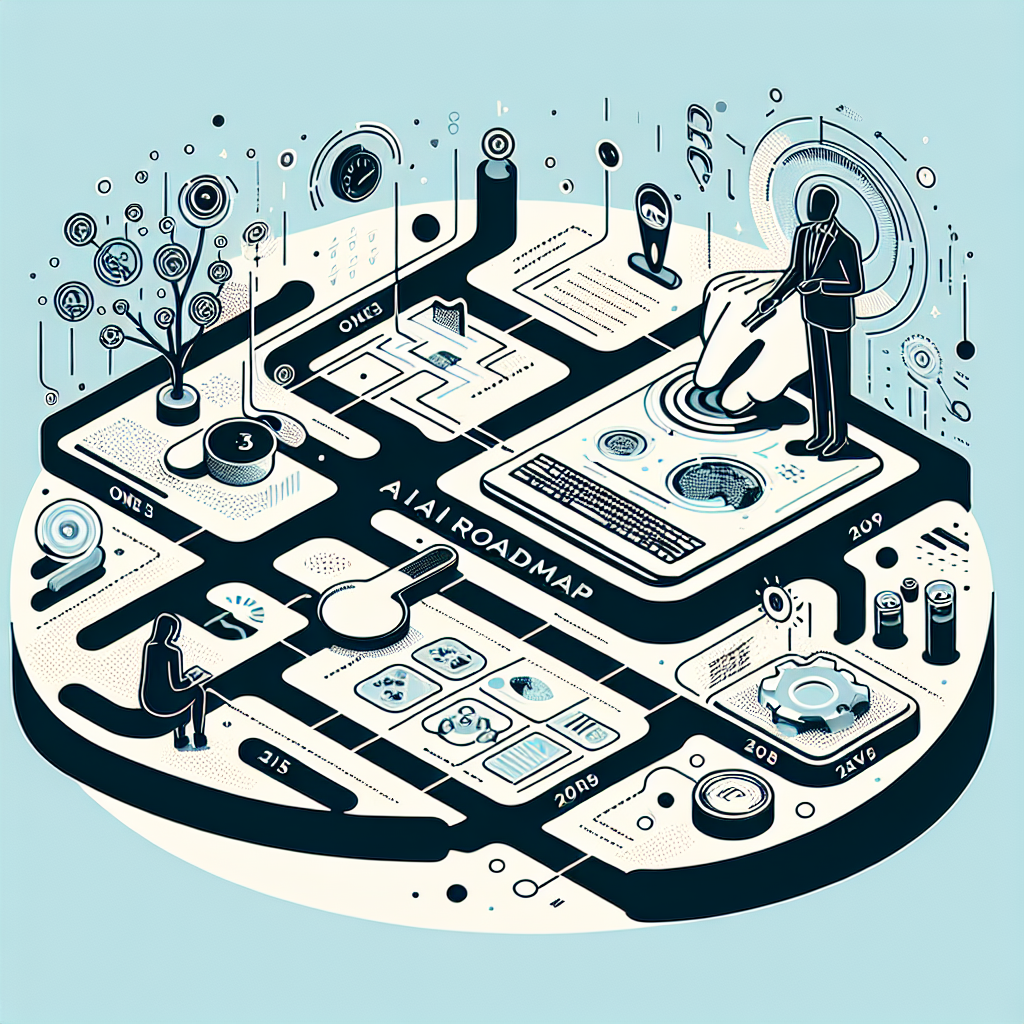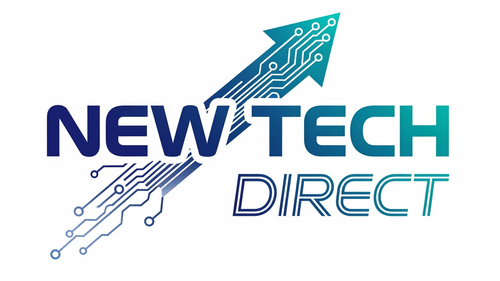Building Your 1-3-5 Year AI Roadmap: A Strategic Plan

Share
Building Your 1-3-5 Year AI Roadmap: A Strategic Plan
Artificial Intelligence is transforming industries, reshaping business models, and redefining competitive advantage. But effective AI implementation doesn’t happen overnight—it requires a well-structured plan. That’s where an AI strategy roadmap becomes essential. In this blog post, you'll discover how to build a phased AI roadmap for the next 1, 3, and 5 years and how it can serve as a blueprint for scalable and sustainable success.
Why You Need an AI Strategy Roadmap
AI technologies offer immense potential—from process automation and enhanced customer experiences to predictive analytics and new revenue streams. However, without a clear roadmap, businesses risk underutilizing AI's capabilities or investing in misaligned technologies. A strategic approach ensures your goals, tools, and teams evolve synchronously with technological advancements and market needs.
Creating a phased AI strategy roadmap helps leadership navigate risks, plan investments effectively, and align implementation with real business outcomes. It also positions organizations for long-term digital transformation success, rather than one-off tech experiments.
Creating Your 1-3-5 Year AI Roadmap
The key to long-term AI success is breaking down your strategy into manageable time frames. The 1-3-5 year model allows you to address immediate challenges, aim for medium-term automation, and develop a long-term vision for innovation. Here’s how to do it effectively:
Year 1: Prioritize Current Pain Points
Your first year should focus on identifying and solving existing problems in your operations. This stage sets the foundation by answering critical questions: Where can AI drive the most immediate value? What current processes are inefficient or overly manual? Which departments are AI-ready?
Steps for Year 1:
- Conduct an AI Readiness Assessment: Evaluate your data quality, infrastructure, and employee skill levels to determine what’s needed for AI adoption.
- Select Pilot Projects: Focus on low-risk, high-impact use cases like automating repetitive tasks, enhancing customer support, or improving supply chain visibility.
- Secure Executive Sponsorship: Get leadership buy-in to ensure the AI strategy receives financial and organizational support.
- Train Internal Teams: Upskill employees to work with AI tools and interpret AI-driven insights.
Use this time to validate technologies and build a strong foundation of AI capabilities. Starting small helps you learn from initial deployments before scaling AI across departments.
Year 3: Scale Automation and Insights
Once you’ve addressed immediate pain points, your three-year AI roadmap zooms out for broader initiatives. By this phase, your organization has the infrastructure and cultural readiness to support enterprise-wide transformation.
Goals for Year 3 include:
- Enhance Decision-Making: Use predictive analytics, machine learning, and AI-driven dashboards to improve forecasting, customer behavior analysis, and operational planning.
- Integrate AI Across Departments: Expand use cases in marketing, HR, customer service, finance, and logistics to drive synergies and organization-wide efficiency.
- Enable Process Reengineering: Redesign business workflows with AI at their core, reducing friction and enhancing speed.
- Monitor Performance: Establish KPI frameworks to rigorously measure ROI and impact of AI initiatives.
This phase represents a shift from experimentation to strategic execution. You’re not just using AI to solve problems—you’re using it to create competitive advantages and drive performance across your organization.
Year 5: Reimagine Your Business Model
The final phase in your AI roadmap focuses on innovation and business model transformation. With a strong AI foundation and a culture of digital agility, your organization is now poised to lead in your industry by leveraging cutting-edge AI applications.
Long-term vision for Year 5:
- Develop New Revenue Streams: Leverage AI to create smart products, digital services, or AI-powered platforms. For example, personalization engines or automated consulting services.
- Adopt Advanced Technologies: Explore generative AI, autonomous systems, and real-time AI-powered analytics to innovate workflows and offerings.
- Build AI Governance and Ethics Programs: With deeper AI integration, it’s vital to establish frameworks for ethical use, data protection, and compliance.
- Shape AI-First Culture: Empower employees to initiate and own AI innovations and embrace continuous learning to stay ahead of technological shifts.
At this stage, AI is no longer a tool—it’s core to your company’s identity and ability to compete in an increasingly digital marketplace.
Common Pitfalls to Avoid in Your AI Roadmap
Even with a clear strategy, businesses can stumble without the right approach. Watch out for these common issues during your AI journey:
- Lack of Executive Support: Without top-down commitment, AI initiatives might never get the traction they need.
- Data Challenges: Poor data quality, silos, or governance issues can derail AI models and insights.
- Undefined Success Metrics: Measuring progress through vague KPIs makes it hard to track ROI or pivot strategies.
- Over-Reliance on Vendors: External platforms are helpful, but internal capabilities and talent are essential long-term.
Accelerate Your Planning with the Right Tools
Creating a robust AI strategy roadmap takes time and collaboration. To streamline the process and guide your organization through each critical phase, consider leveraging curated resources specifically built for structured AI transformation.
One powerful tool to support your strategy is The AI Advantage Bundle: eBook + Workbook. It walks you through building a clear, strategic AI plan—from assessing short-term pain points and evaluating automation opportunities to defining a long-term vision for innovation and new business models. This resource is ideal for business leaders who want to turn potential into performance with a proven planning framework.
Final Thoughts: A Roadmap to Digital Leadership
In the age of AI, every organization must become a technology organization. A structured AI strategy roadmap enables better decision-making, stronger innovation, and resilient growth. By thinking in 1-3-5 year stages, your organization can balance experimentation with execution, preparing not just for the AI tools of today, but the business models of tomorrow.
Whether you're striving to reduce operational costs, enrich customer relationships, or uncover new revenue pathways, your roadmap guides your every step. Use it not just to adapt to the future—but to design it.
Start planning your AI journey today with the AI Advantage Bundle and prepare your business to lead in an AI-powered world.
Meta description: Learn how to build a 1-3-5 year AI strategy roadmap to address pain points, scale transformation, and create future-ready business models.
